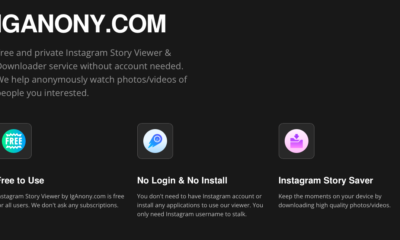As a business evolves from a small startup to a growing company, its accounting and operational needs become increasingly complex. Many entrepreneurs start out using basic software like QuickBooks Online or QuickBooks Desktop. These entry-level platforms provide core financial management tools and work well initially.
However, there often comes a tipping point where the limitations of QuickBooks become frustrating. Upgrading to a robust ERP system like NetSuite enables you to scale while gaining real-time visibility across the entire business. While NetSuite requires more investment upfront, it delivers a unified platform to sustain growth for years to come.
This comprehensive guide examines the key differences between QuickBooks and NetSuite across the following dimensions:
– Features and Functionality
– Customization and Integration
– Reporting and Analytics
– Scalability and Growth Support
– Total Cost of Ownership
We’ll explore the pros and cons of each platform and why at a certain stage, transitioning to NetSuite becomes the strategic choice for ambitious organizations. Let’s dive in.
QuickBooks Overview
QuickBooks Online and QuickBooks Desktop are affordable accounting platforms designed for small business. They provide basic tools to address tasks like:
– Invoicing and billing
– Payroll
– Expense tracking
– Inventory management
– Financial reporting
QuickBooks is user-friendly and easy to get started with. It works well for startup ventures and small companies with straightforward accounting needs. However, as organizations grow in size and complexity, the structural limitations become more apparent.
Let’s first highlight some of the key capabilities that serve small businesses effectively:
Simplicity and Ease-of-Use
QuickBooks provides an intuitive user interface and simplified workflows for common accounting activities. Employees can quickly learn to create invoices, pay bills, manage payroll and track expenses without extensive training. The straightforward platform works nicely for smaller teams.
Strong Accounting Foundation
QuickBooks delivers solid general accounting features for accounts payable/receivable, double entry bookkeeping, bank reconciliation, and financial reporting. It can handle basic inventory needs for a smaller operation. For bread-and-butter accounting, QuickBooks has most small companies covered.
Affordable Pricing Tiers
Entry-level pricing starts at just $7 per month for QuickBooks Online Simple Start. Their software is generally designed to be affordable for early stage and loosely-structured businesses. The low barrier to entry makes QuickBooks accessible for bootstrapped companies.
Cloud Accessibility
QuickBooks Online lets users access the accounting system from any desktop or mobile browser. This allows employees to handle finance processes from multiple locations and devices. The platform leverages the cloud to provide anywhere access.
Over time however, inherent limitations around scalability, flexibility and robustness become more painful:
Limited Customization
QuickBooks allows minimal customization without relying on external developers. There are not many options to tailor forms, workflows or reports to a company’s specific operational needs. Unique processes generally require workarounds.
Lightweight Integrations
Connecting QuickBooks to other business applications involves lightweight third-party integrations or exporting data to CSV. Options for seamlessly linking finance with deeper data sources across sales, marketing, inventory and fulfillment are lacking.
Constricted Scalability
QuickBooks is designed for small businesses with 5-10 employees. Expanding substantially beyond these limits requires switching to a more scalable platform. The number of users supported and amount of transaction volume handled is capped.
Gaps in Reporting
While QuickBooks covers the basics for financial statements and inventory reports, there are gaps in areas like purchasing, sales and multi-dimensional analysis. Additional manual manipulation using Excel is often required to get detailed insights.
Limited Intercompany Support
For companies with multiple business entities and locations, support for consolidated financials and intercompany transactions is lacking. QuickBooks does not adequately equip growing businesses with distributed footprint.
These limitations become deal-breakers once a company graduates beyond the small business stage. Let’s now examine how NetSuite addresses these gaps with an enterprise-ready platform.
NetSuite Overview
NetSuite is a cloud-based ERP platform built to sustain and accelerate business growth. It brings together financial and operational data across commerce, accounting, fulfillment, HR, inventory and more on a unified system. Leading organizations worldwide rely on NetSuite to future-proof their technology infrastructure for global growth.
Here are some standout capabilities:
Unified Cloud Platform
NetSuite unifies key processes from CRM, ecommerce, HR, inventory management and accounting on a single cloud platform. Critical real-time data is shared across departments on an intelligent business management system.
Dashboards and Reporting
Sophisticated financial and operational dashboards provide real-time visibility using customizable key performance indicators tailored to your organization.
Scalability
NetSuite easily scales to support large enterprises with thousands of users across the globe. The system can rapidly onboard new business units, subsidiaries and locations to support expansion.
Customization
SuiteCloud Development Platform allows extensive customization to fine-tune workflows, reports, forms, data access and integrations to unique needs.
Here is a more detailed look at some differentiating capabilities:
Real-time Analytics and Business Intelligence
NetSuite delivers hundreds of pre-built KPI reports and analytics spanning sales, orders, inventory, purchasing, fulfillment and accounting. This enables data-driven decisions across all levels of the business without dependency on IT. Dashboards and reports can be easily customized.
Advanced Financial Management
Support for multi-currency and global consolidated financials enables segmentation and reporting by business unit, region, department or any slice of the business. Flexible budgeting, forecasting and variance analysis provide predictive insights.
Order and Inventory Management
Sophisticated order fulfillment, inventory control and supply chain processes improve procurement efficiency. Demand planning and warehouse management capabilities help optimize inventory utilization.
Commerce-Ready Ecommerce
A unified commerce platform tightly links web and mobile sites to order and inventory data in real-time. This enables personalized merchandising, predictive intelligence and customer self-service.
To summarize, NetSuite goes far beyond basic accounting software and delivers an integrated platform to operate a complex, fast-growing business. For organizations hitting friction with solutions like QuickBooks, upgrading to NetSuite is the next logical step.
Evaluating When To Upgrade
For many small businesses, QuickBooks provides an affordable starting point to manage basic accounting and operational needs.
However, over time QuickBooks’ limitations around scalability, reporting, customization, and integration become more painful. Ambitious companies typically outgrow entry-level accounting software as operational complexity escalates.
Here are four signs it may be time to upgrade from QuickBooks:
1. Revenue Growth Over $10M Annual Revenue
As revenue crosses into higher levels, transaction volume and business complexity tends to accelerate. At this stage, limitations of QuickBooks software start hindering efficiency and visibility. Lack of flexibility in the platform also throttles innovation.
2. Expanding Beyond Single Company Entity
If your enterprise has grown to multiple locations, business units or product lines, staying on a single QuickBooks company file becomes extremely restrictive. Consolidated reporting and intercompany transactions suffer.
3. Supply Chain Scaling Pains
Efficient supply chain operations is key for manufacturing, wholesale and retail organizations. If inventory management, procurement processes and shop floor workflows feel fragmented, it leads to fulfillment delays and added costs.
4. Decision Making Blindspots
Spotting financial reporting gaps and workarounds to get data needed for planning and analysis is a red flag. Management shouldn’t have key questions that accounting software cannot address.
Switching accounting systems is no small undertaking. But continuing to limp along on infrastructure not designed for bigger organizations tends to hurt in the long run. NetSuite helps growing enterprises break free of limitations holding them back.
NetSuite Implementation Best Practices
Transitioning to NetSuite from QuickBooks requires careful planning and expertise to ensure a smooth experience. Here are best practices to drive success:
1. Phase Approach By Functions
Rather than attempting to switch over all departments simultaneously, take a staged rollout focusing on order processing, inventory then accounting last.
2. Get Key Stakeholder Buy-In
Getting input from finance, operations and sales during planning is vital for user adoption. Change management must address people and process impacts.
3. Data Migration Strategy
Avoid just dumping historical transaction data into NetSuite. Carefully clean and transform legacy data to support new processes.
4. Train Power Users First
Identify key users across business units to train on new workflows for troubleshooting during rollout.
5. Customize Minimally At First
Start with out-of-the-box processes and add customization over time for specific pain points only after launch.
The Right Implementation Partner
Perhaps the most crucial factor determining whether your move to NetSuite goes smoothly is choosing the right NetSuite implementation partner. Avoid generic IT consultants and instead engage specialists like Anchor Group that focus exclusively on NetSuite.
As a 5-Star ranked NetSuite Solution Provider Partner, Anchor Group’s award-winning team brings experience across 200+ enterprise NetSuite implementations. Our methodology combines leading practices refined across manufacturing, distribution, retail and services organizations.
Anchor Group is aligned fully with NetSuite, sharing the mission to help customers achieve their business vision leveraging the transformational power of the cloud. Our high-touch partnership ensures you realize maximum value and return on investment from NetSuite.
Here are some key reasons to engage Anchor Group:
– Deep NetSuite Expertise
Our team brings an average of 8+ years focused exclusively on NetSuite including multiple NetSuite certifications. You benefit from specialist-level knowledge.
– Proven Methodology
Our 5-Step Path to Go Live approach ensures your implementation hits milestones and stays within budget. We leverage process templates refined over years.
– Vertical Solutions
Our NetSuite developers tailor NetSuite to your industry requirements whether you are a manufacturer, wholesaler, retailer or professional services firm.
– Change Management
We help you drive organizational alignment and user adoption by addressing changes to people and processes brought by new technology.
Conclusion
Most growing companies reach an inflection point where entry-level accounting systems hold them back due to lack of flexibility, scalability and robust reporting. Upgrading to NetSuite can deliver the visibility, customization and integrations needed to sustain rapid expansion.
But the move from QuickBooks to NetSuite must be carefully orchestrated. Partnering with specialists like Anchor Group helps you migrate successfully while setting the stage for transformative growth in the years ahead.

 Business7 months ago
Business7 months ago
 Life Style7 months ago
Life Style7 months ago
 Life Style7 months ago
Life Style7 months ago
 Games7 months ago
Games7 months ago
 Life Style8 months ago
Life Style8 months ago
 Life Style7 months ago
Life Style7 months ago
 Education7 months ago
Education7 months ago
 Life Style7 months ago
Life Style7 months ago





